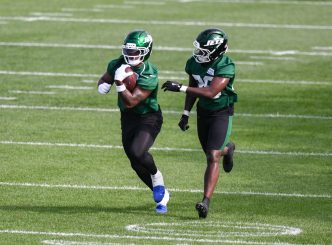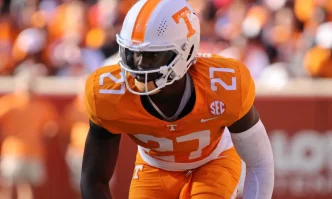When Name, Image, and Likeness (NIL) deals were introduced, they were celebrated as a victory for college athletes. For the first time, players could profit from their personal brand, earning money while pursuing their education and dreams on the field. But as the NIL era unfolds, the unintended consequences are becoming harder to ignore. Not only is NIL reshaping the landscape of college football, but it’s also creating pitfalls that could jeopardize the very careers it was meant to empower.
The Allure of Fast Money
For many young athletes, the allure of NIL money is impossible to resist. From endorsement deals to social media sponsorships, the opportunities are seemingly endless. But with this newfound wealth comes a dangerous distraction: the temptation to prioritize short-term gains over long-term career development.
In the pursuit of quick paydays, some athletes may lose sight of the bigger picture—improving their craft, staying focused on academics, and building the skills needed for success at the professional level. It’s a classic case of putting the cart before the horse: athletes are cashing in now but risking their future earning potential by neglecting the fundamentals that lead to sustained success.
NIL and the Transfer Carousel
The transfer portal, already a contentious topic in college sports, has become even more chaotic in the NIL era. Players are now more incentivized than ever to jump from one program to another, chasing better deals and bigger platforms.
While mobility is important, constant movement can stunt an athlete’s development. Frequent transfers disrupt continuity in training, coaching, and game experience. Instead of focusing on mastering a system or improving within a stable environment, athletes risk becoming journeymen, never reaching their full potential.
Coaches, meanwhile, are left trying to rebuild rosters every offseason, often favoring proven transfer talent over developing younger players. The result? A culture where loyalty and development take a backseat to instant gratification.
Financial Literacy: The Missing Piece
One of the most glaring issues with NIL is the lack of financial literacy education for athletes. For many players, NIL deals represent their first experience with significant money. Without proper guidance, this influx of cash can lead to poor financial decisions, tax problems, or even exploitation by predatory advisors.
Athletes who fail to manage their money wisely could find themselves in financial trouble before their professional careers even begin. The promise of NIL is to set athletes up for future success, but without the right tools and education, it’s setting many up for failure.
The Impact on Career Focus
The NIL era has also brought a shift in how athletes market themselves. In addition to excelling on the field, players are now expected to build and maintain personal brands. Social media presence, sponsorship obligations, and public appearances are becoming a regular part of an athlete’s life.
While these activities are beneficial in moderation, they can easily become distractions. The time and energy spent on branding and marketing could be better used to improve athletic performance or focus on academics. For some players, the pressure to maintain their public image becomes overwhelming, leading to burnout or diminished on-field performance.
Diminished Team Dynamics
The team dynamic—one of the hallmarks of college sports—is also under threat. NIL deals often highlight individual players, creating potential resentment within locker rooms. When one player is raking in thousands (or millions) while others struggle to get noticed, it can create divides that hurt team cohesion.
Coaches now face the added challenge of managing these dynamics, ensuring that NIL doesn’t disrupt the culture of their programs. For athletes, navigating these relationships can be just as challenging as the game itself.
The Bigger Picture: What’s at Stake?
The ultimate goal of college athletics is to prepare student-athletes for life after sports, whether in the professional arena or in other careers. But the current NIL landscape risks derailing those aspirations.
Without proper oversight, NIL is turning college sports into a money-first enterprise, sidelining the values of education, development, and teamwork. The very athletes it was designed to help are often the ones paying the price, both on and off the field.
What Needs to Change
- Financial Education Programs: Schools and governing bodies must prioritize financial literacy education, equipping athletes with the tools to manage their money responsibly.
- Transfer Portal Regulation: Limiting the number of times athletes can transfer without sitting out a season could restore some stability and encourage long-term development.
- Balancing NIL Commitments: Setting boundaries around sponsorship obligations could help athletes focus on their primary roles as students and athletes.
- Mentorship Opportunities: Pairing athletes with mentors who’ve navigated similar challenges can help them stay grounded and make better decisions.
Final Thoughts
NIL had noble intentions, but its implementation has exposed serious flaws that are hurting the athletes it was meant to uplift. Without proper oversight and reform, college sports could become a cautionary tale of good intentions gone wrong.
Athletes deserve the chance to profit from their talents, but they also deserve a system that prioritizes their long-term success. If the current trajectory continues, we may see countless careers derailed by short-term thinking, financial mismanagement, and lost opportunities for growth. For the sake of the athletes and the game itself, it’s time to address these issues before it’s too late.








